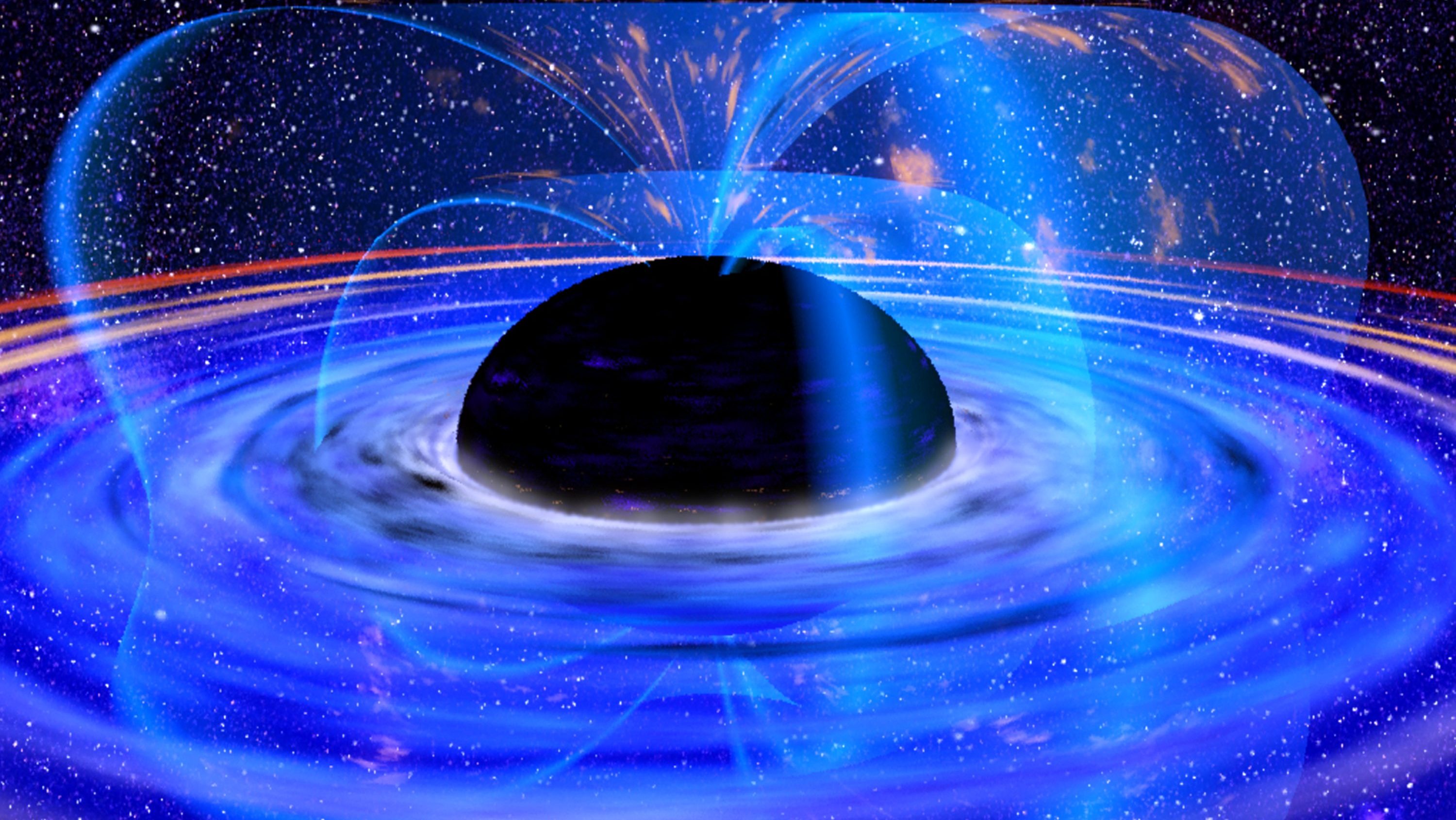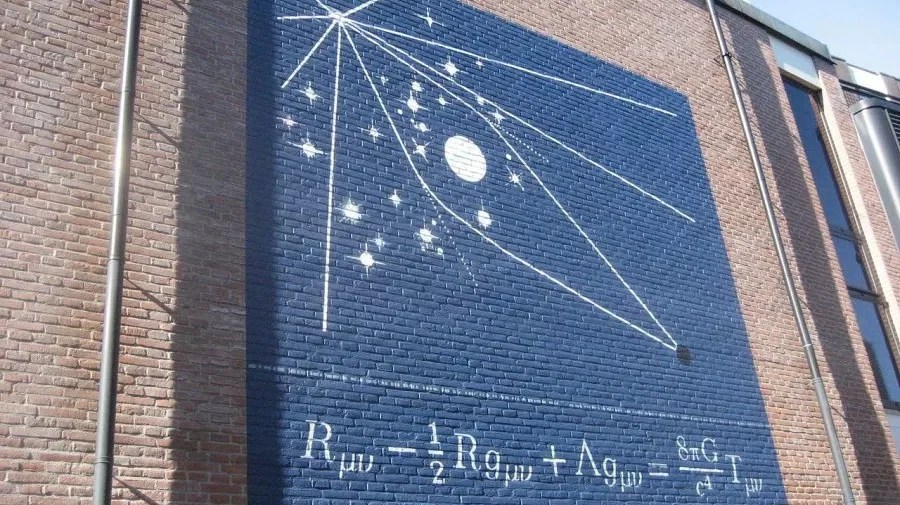Theoretical cosmologist Janna Levin challenges long-held assumptions about the behavior of black holes, information conservation, and the fundamental nature of space, time, and gravity. She uses black holes to explore the physical feasibility of wormholes: theoretical passages or tunnel-like structures that connect separate points in spacetime.
Stephen Hawking proposed that black holes emit energy, causing them to eventually evaporate — but this challenges the conservation of information. The holographic principle suggests that information is encoded on a black hole’s surface, addressing this information paradox.
Levin metaphorically likens black holes to embroidery, woven from quantum threads. Her quantum perspective has profound implications, potentially altering our understanding of gravity and spacetime’s fundamental nature — even questioning our pursuit of a theory of everything.
Janna Levin: Once you start accepting that spacetime can curve or it can stretch, it can contract, time can warp, you can play any game you want. One very simple thing to play around with is the idea of a wormhole. If you can start to manipulate space, wouldn't you wanna manipulate it to make a bridge between here and some far-off point?
And then what you can ask is, "How would this be possible? How would I find matter and energy to do this?" And the Einstein equations will tell you these are the features of the matter and the energy you will need to make that bridge. The problem is that the forms of matter and energy that are required to build them and keep them open, they want to collapse.
So I think the argument would be wormholes are mathematically, perfectly feasible. Physically, they might be impossible because there might never be the forms of matter and energy that are required to build them. Quantum wormholes are still under discussion. This stuff's so hard, man.
Okay, let's try something: All of matter really is just a list of descriptions of a short number of characteristics. To be an electron means to have a that mass, that spin, and that charge, and that's all it means. There's no electron that's slightly heavier. There's no electron that's spinning a little slower or has a different charge. That is all that they are is that list. And we call that "the information."
There's also information in how things relate to each other, and we believe that all of the information in the Universe has to be preserved. It can't be lost. If that electron runs into the singularity and its quantum numbers are gone, that is information falling out of the Universe, disappearing.
Now, the laws of physics really are predicated on the idea that that can never happen because if that can happen, then the laws are meaningless. The discovery of black holes did not lead to a big emotional crisis about the loss of information because of this idea that it was always hidden behind the event horizon. And that one-way window meant that we would be completely ignorant of the loss of the electron and the loss of the electron's quantum numbers and it floating out of existence.
We're protected from that so completely, that people were willing to kind of just shrug their shoulders and call it a conjecture of a protection that we would never run into any problems in the reality of the world, this side of the black hole. I always thought that was a bit glib but that was an attitude people were willing to take, at least until Stephen Hawking. He begins to ask about the quantum properties around black holes.
In quantum mechanics, we believe that there is, in empty space, still quantum activity — and that's what we think the vacuum is. The vacuum kind of churns and froths with this potential. The vacuum doesn't allow anything to happen. There are rules that things always have to come in pairs; and they have to come in pairs so that they don't disturb the nature of the vacuum.
Think of an analogy with color: Imagine you have a color green, and that is the property. You might be able to create a little blue droplet of paint out of this color green if you have the exact yellow pair, such that in combination they make that green, and that has all the properties of the vacuum. What Hawking does that's so unusual is he realizes that if I have a pair, the black hole has the capacity which no other thing in the Universe has, which is it can steal one and leave the other completely alone.
It can hide one of those droplets behind the event horizon. Its pair, which is left behind, let's say it's the yellow droplet can't go back into the vacuum 'cause it no longer has the right properties. It needs its pair to disappear again, in our analogy to become green again. It can't, by itself, be green.
And so that little particle in Hawking's description, he realizes this particle can emanate from just outside the black hole. It's not coming from inside. It's coming from the nothingness, the quantum energy of the vacuum. And it can escape. And if I'm very far, I will receive this yellow particle and I will see it comes from just outside the event horizon of the black hole. And I will deduce that the black hole is emitting energy.
And the other very subtle thing that Hawking realized is because of the rotation of space and time, the blue pair that was absorbed actually decreases the mass of the black hole. So the black hole does get a little bit smaller even though nothing has originated from inside the black hole and escaped. Over time, Hawking calculates and concludes and announces that the black hole will evaporate and eventually it will be gone. And all of this energy that is stolen from the vacuum around the black hole, it will look like the black hole became hot and burnt away.
Once you yank up the curtain of the event horizon, it's gone. The singularity itself might even be gone. But what happened to all of that stuff that fell inside? What happened to all of that fundamental quantum information that all of our laws say is preserved, cannot be destroyed, where did it all go? Now I have a Universe that has exposed to me that information has ceased to exist and fallen out.
And that became a huge crisis between those that believed that quantum mechanics was sacred and true, that you cannot destroy information, and those who believed that Einstein's theory of curved spacetime is sacred, black holes are exactly as we understand them to be, and that there must be something wrong with quantum mechanics: and that led to the great 'information loss paradox.'
Narrator: So where do we go from there? Do we talk about quantum entanglement? Do we talk about firewall?
Levin: Yeah, we can talk about, maybe we could talk about holography.
Narrator: Cool.
Levin: Okay. The idea of holography in ordinary technology is that you are encoding in two dimensions three-dimensional information, so that in some two dimensional surface, you shine light on it in a particular way and it renders a three-dimensional volume. This term was invoked by Lenny Susskind; he was invoking it as a way of describing the observation that black holes might actually be two dimensional and this illusion of a three-dimensional astrophysical object with an interior, maybe an entire universe, it's just a projection.
And the reason why this was exciting and important, it was saying, "Maybe the information about what fell into the black hole is always somehow retained on the surface and that never falls into the black hole." And that's why it can be encoded in the radiation that comes out. And so when the event horizon is yanked up and the black hole is gone, there is not a conflict anymore because all that information made it out. It never fell into a singularity, it never fell out of the Universe: it was always somehow retained on the surface.
One peculiarity of thinking about this possibility that the information is somehow kept on the outside is that it can lead to something called 'firewalls.' When you cross this nothingness of the event horizon, what we call "no drama," there's no drama at the event horizon, instead you encounter a blazing hot firewall and your quantum bits are obliterated at the event horizon; essentially, you are stuck there.
That is a very interesting idea, but it was also, it induced a lot of hysteria because nothing about general relativity suggests that there's any reason to expect anything at all dramatic to be happening at the event horizon. And so, this led to a lot of new energy and reinvigorated a lot of discussion about how can we retain information in the event horizon without invoking this firewall. Well, we don't need a firewall if there's a way for the information outside the event horizon to be entangled with the information that fell in.
And that's similar to the idea of two particles being a pair and being a pair in such a way that they're featureless when combined, but when separate are very distinct. And if two particles are entangled, they have a relationship with each other and they can only be one way if the other is the other way. One can only spin up if the other spins down. And so by reading the information of the particle that escapes, maybe you can reconstruct the story of the particle that fell in.
On the other hand, if the particles never fall in, the radiation is entangled with itself. Maybe there are little wormholes that are connecting the interior of the black hole, quantum wormholes with the exterior of the black hole, such that, in some sense the stuff that fell in was the same as the stuff that came out.
Okay, lemme try this: I think that a more metaphorical way to look at how wormholes can help us understand black holes is to say that when I look at a black hole and I see an event horizon and a solid shadow, and I believe that to be real, that I might be suffering from an illusion that the black hole is fundamental when it is not. Maybe it's more like embroidery: where a bunch of threads are sewn together and those embroidered threads together at a distance look like a solid shadow.
But what it really is, is a bunch of overlapping threads that have created the illusion of the existence of an event horizon. And in this analogy, those overlapping threads are little quantum wormholes. They're negotiating the information that falls into the black hole with the spacetime and the information that comes out.
And they do this in this quantum way so that it's not that they're navigating the event horizon, it's that they're creating: that the event horizon is emerging from the overlap of all of these quantum wormholes. And that has very, very profound implications. It will resolve the information lost paradox which has haunted theoretical physics since Hawking first proposed it in 1974.
It would not only solve that problem, but it would be a smoking gun: a kind of signal that the theory of everything that we are pursuing is probably not the right path. That gravity in some sense is not fundamental, that things like spacetime, black holes themselves, really emerge out of the froth of something that is actually a hundred percent quantum mechanical.






